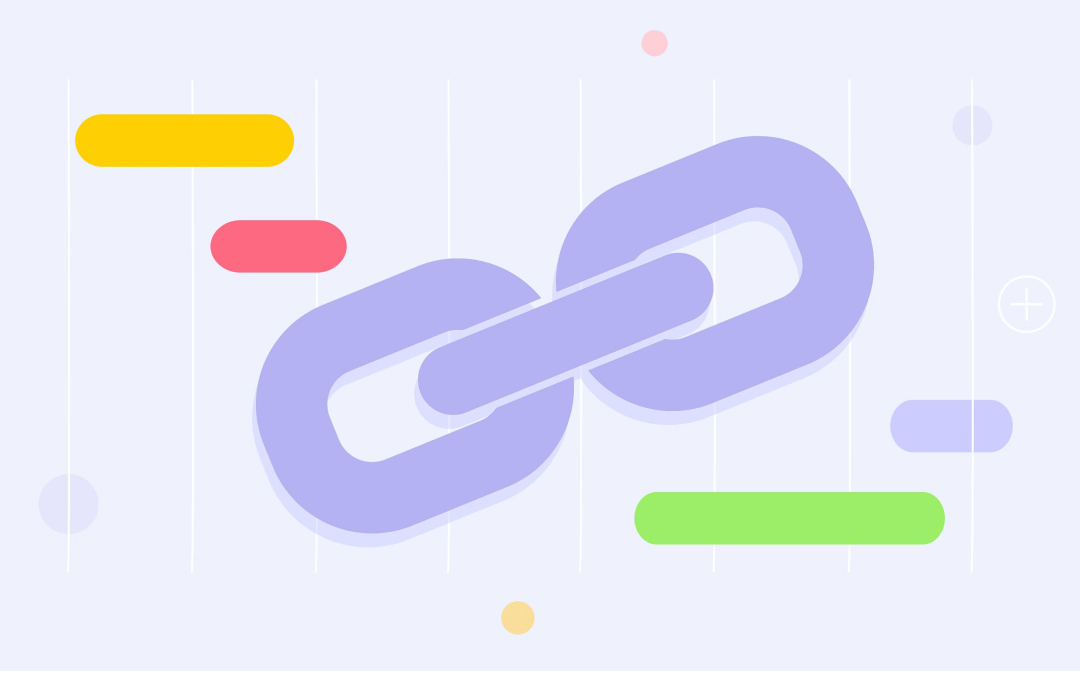Sometimes, it’s rather difficult to predict whether a company will be capable of delivering a certain product or service, whether it’s reasonable to invest in this project, and how it will affect the current workflow. In other words, there is much uncertainty regarding a project’s practicability.
In this case, a project manager should conduct a feasibility study that will help make the right decision as to whether it’s reasonable to intake this project or not. Read the article to learn about this study in more detail.
What Is a Feasibility Study?
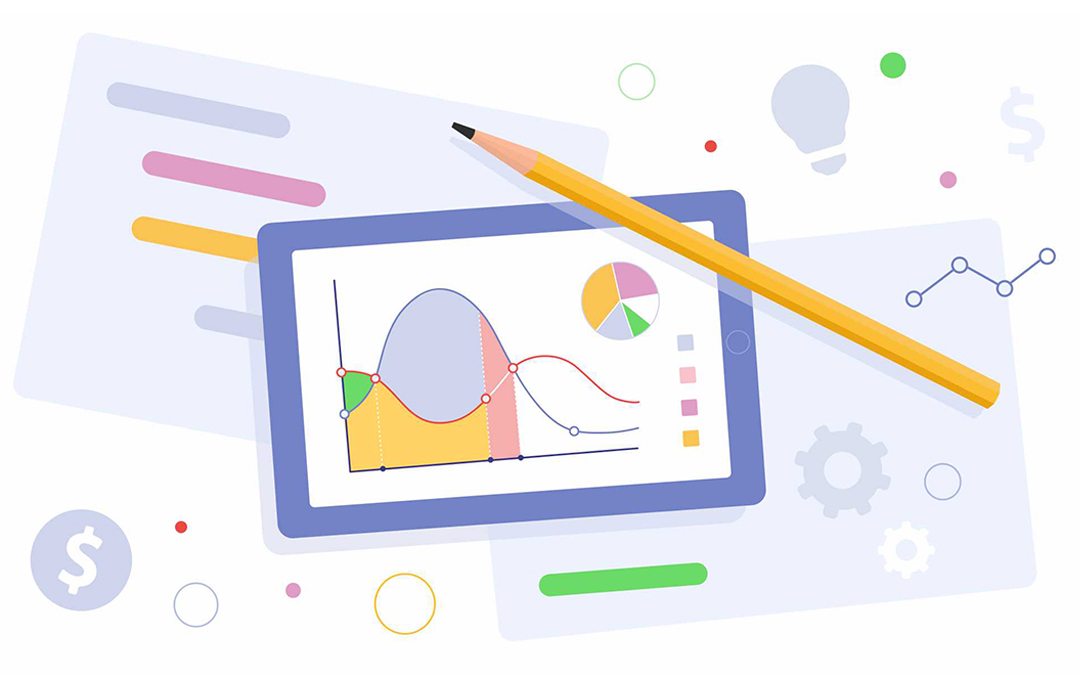
A feasibility study is an important decision-making tool used in business and project management to decide whether a certain initiative is executable and can lead to desired outcomes. In project management, it’s performed right after the business case is prepared. The basic purpose of such a study is to prevent stakeholders from intaking unfeasible projects that will result in financial losses.
A feasibility study will answer the following questions:
- Does a company have enough resources (human, financial, material) to complete the project?
- Will the delivered product/services be in demand on the market?
- Is it possible to get the expected ROI given the existing constraints and possible risks?
- Will the project outcome be aligned with a company’s business objectives?
It’s worth noting that a feasibility study is not a must for every single project. First, in some cases, a project’s feasibility is obvious, so no additional analysis is required. Secondly, if a company (or its competitors) has recently completed a similar project, the issue of its feasibility becomes clear automatically. So, when it’s difficult to make the right decision as to whether to intake a certain project or not, a feasibility analysis will become the right solution.
A feasibility study touches upon several areas that must be analyzed to assess all the pros and cons of undertaking a project. Accordingly, we can distinguish four feasibility types [1].
Types of feasibility
-
Technical feasibility
It refers to the evaluation of technical resources (tools, equipment, facilities) available at the company to complete a proposed initiative. Also, it’s about technical teams’ capability to implement the idea behind a project.
-
Financial (or economic) feasibility
It makes it possible to determine how much a project will cost and whether a company can benefit from this initiative (expected return on investment) as well as estimate possible financial risks. This analysis can be assisted by a company’s finance department for more accurate outcomes. It should result in compiling a projected income statement for the project being analyzed.
-
Market feasibility
Market assessment involves the analysis of market opportunities for the delivered product/services: whether there is the demand for them, what competitors’ positions are, what market strategy can be used to promote the delivered product/services, etc. This is one of the most important steps in the whole feasibility study – e.g., if the offered products/services are in high demand on the market, feasibility of intaking this project increases significantly.
-
Operational feasibility
It determines whether a company has necessary resources (employees have enough capacity and required skills) to complete a proposed initiative.
Having performed the study, it’s time to present a feasibility report that will help stakeholders weigh all the pros and cons to make the final go/no-go decision. The elements of such a report are presented in the image below.
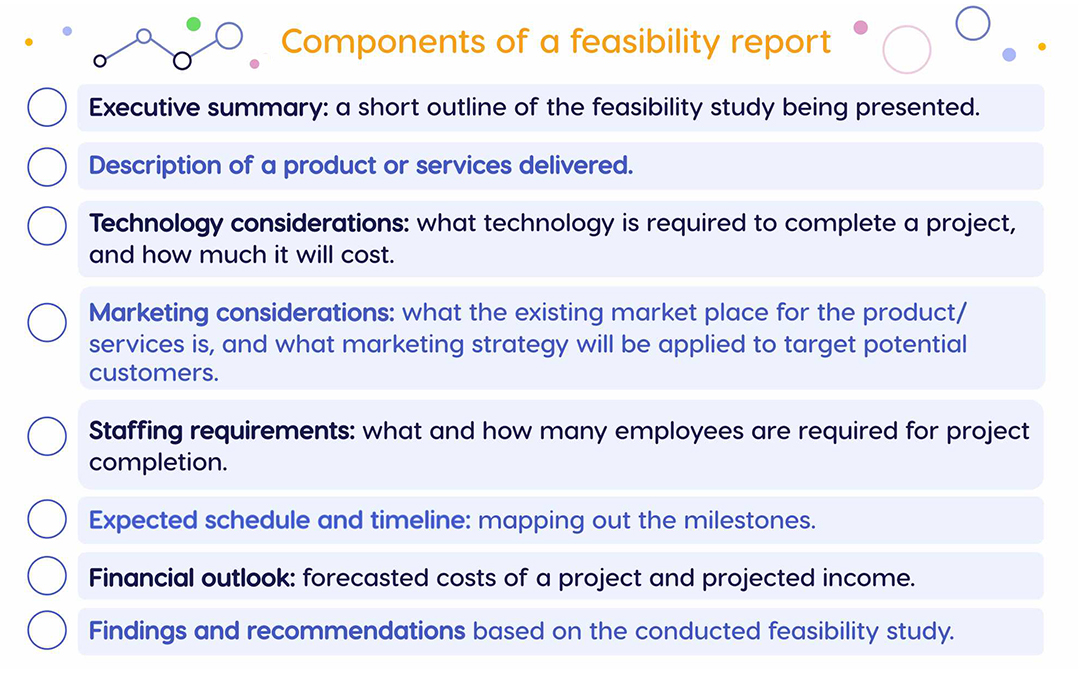
Proceed to the next subsection to find out possible challenges that make it difficult to conduct a reliable feasible study.
Challenges of Performing a Feasibility Study and Possible Solutions
Management by decibels
It can happen that some influential stakeholders will be trying to hog the blanket and push through a project that will serve their interests without any regards to its feasibility. Of course, it can lead to serious risks for current projects, financial losses or both, which will threaten the success of the whole business.
Possible solution: Provide the most accurate and reliable data
One of the main purposes of a feasibility study is to collect as accurate data as possible, so that decision-makers will rely on it rather than be persuaded by someone’s opinion. There are different ways to gather relevant information, e.g.:
- сommunicate with the team that is expected to work on the project,
- use customer surveys, relevant market statistics and study market trends,
- perform scenario analysis,
- assess possible risks.
This data will provide grounds for reasonable decision-making.
Read our blog post to learn more about data-driven project management.
Uncertainty and lack of necessary information
Uncertainty is a permanent companion for both business and project management. There are always things that we cannot predict: changes in economic and market conditions, or some unexpected events like covid-19 outbreak or war. This is especially relevant for long-term initiatives whose initial planning can be significantly disrupted by unpredictable situations. So, when making a forecast as to a project’s feasibility, we cannot be 100% sure that nothing will change over time. Of course, it makes decision-making difficult.
Possible solution: Think of a plan B
When conducting a feasibility study, it’s a good idea to try to consider possible alternatives if some of the variables change. You can also determine a project’s weak points to understand how risky the initiative is. Though you cannot eliminate uncertainty from your estimates and feasibility study, such measures will make decision-makers think twice.
Read more: Fighting Uncertainty in Project Management: Arm Yourself With the Right Tool
Adding a new initiative to a multi-project environment
Adding a new project to your current environment will cause a number of difficulties. First, a new project implies additional workload for your employees – this issue should be managed carefully to prevent people from overload. Second, there will be resource conflicts resulting from a shared resource pool. So, if no additional employees are hired, some milestones or even due dates can be missed because of the team members’ unavailability. And third, there can be overlapping due dates, which can also result in delays. So, you need to know beforehand how the project environment will change if one more initiative is added.
Possible solution: Use the potential of project/resource management solution
Project and resource management solutions provide great assistance in determining operational feasibility of a project. To illustrate how such solutions help with feasibility analysis, we’ll examine the functionality of Epicflow, a multi-project resource management software.
We can consider at least three functions that will come useful when conducting the feasibility study.
- Running simulations to simplify decision-making
Let’s say, you have several projects in the pipeline. How will your environment change upon adding an extra project? Will you be able to deliver current projects on time? Thanks to What-if Simulation functionality, you have an opportunity to experiment with the current workflow. Having tried out different scenarios, you can make the most reasonable decision as to intaking a new project, which will be based on reliable data, not just assumptions.
- Predicting team members’ workload in the future
When analyzing feasibility of intaking a project, you may need the information on employees current workload and capacity, and how they will change over time. You can review this information in Epicflow’s Future Load Graph. Apart from detecting resource bottlenecks, it will give an idea of how you should plan your resources so that they can cope with their tasks without being overloaded or idle.
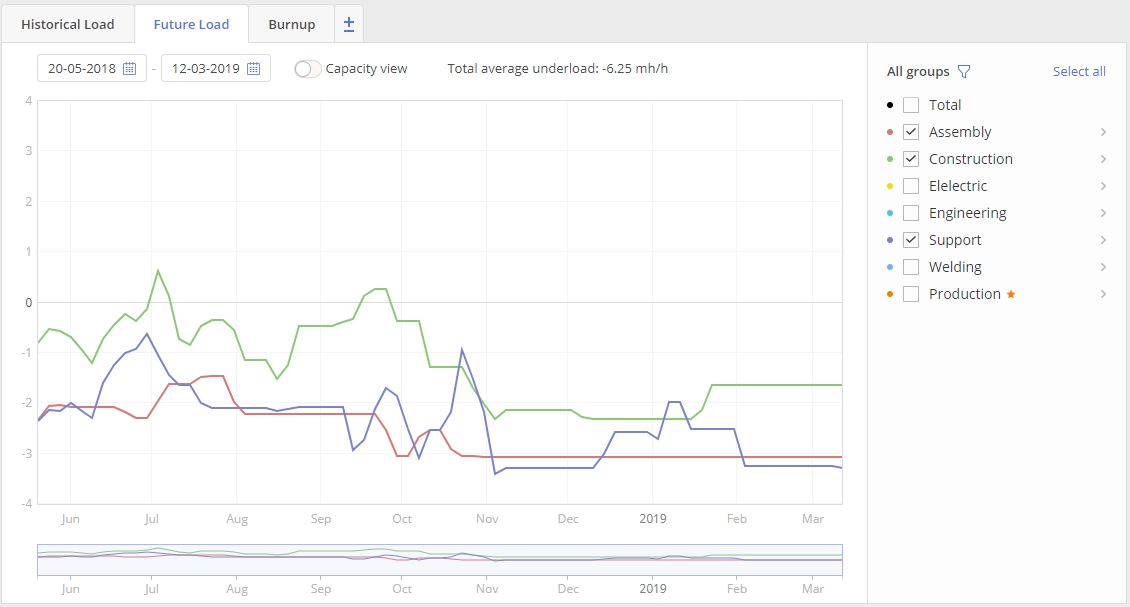
- Providing insight into teams’ historical output
When conducting the operational part of a feasibility study, it’s useful to review the team’s historical output. Relevant data are available in Epicflow’s Historical Load Graph. This will allow you to assess employees’ capabilities realistically and give insight into possible resource planning needs for a new project. In simple words, you’ll know what to expect of your team, and whether you’ll require more resources to complete the expected scope of work.
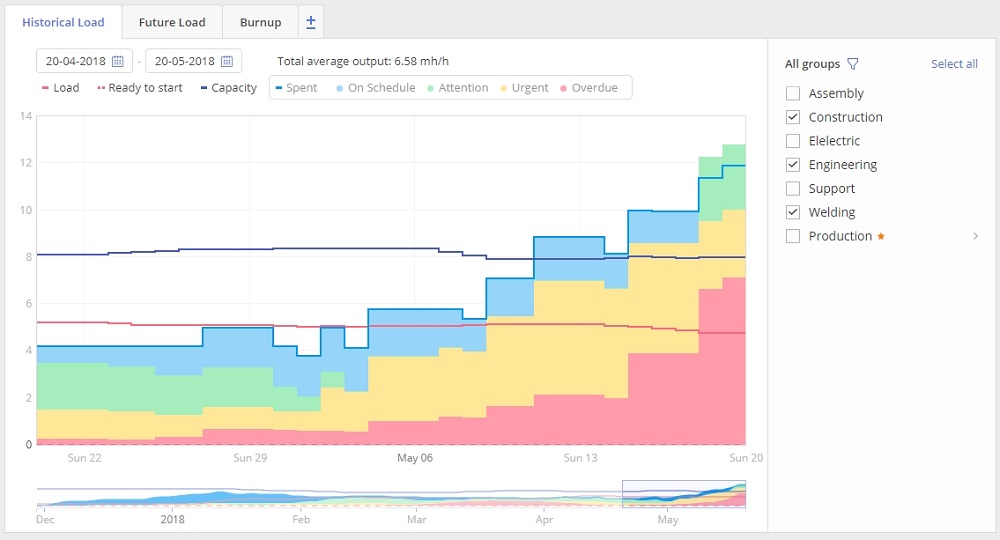
Learn more about opportunities to improve your project and resource management processes with Epicflow by booking a call with our experts.
References
- What Is a Feasibility Study? (2021). Retrieved from: https://www.investopedia.com/terms/f/feasibility-study.asp#toc-what-is-a-feasibility-study







